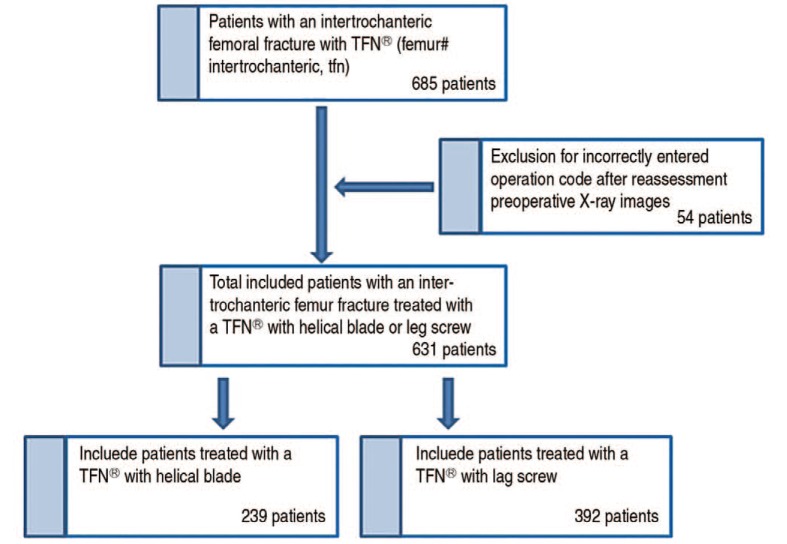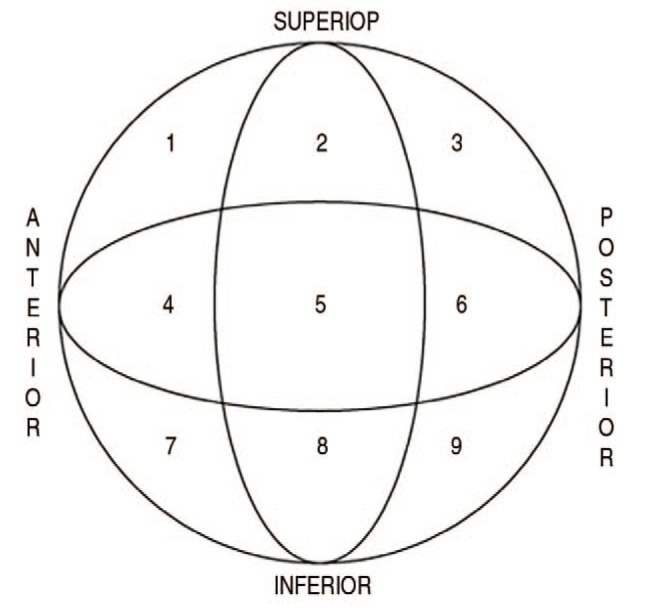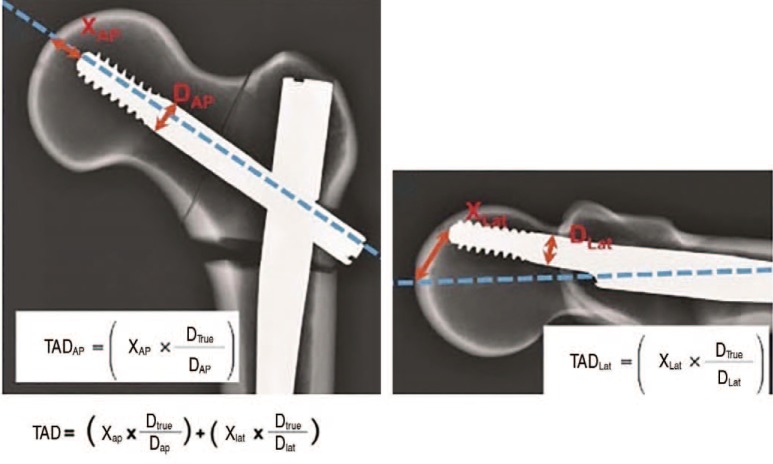Hip Pelvis.
2019 Mar;31(1):48-56. 10.5371/hp.2019.31.1.48.
Trochanteric Fixation Nail® with Helical Blade Compared with Femoral Neck Screw for Operative Treatment of Intertrochanteric Femoral Fractures
- Affiliations
-
- 1Department of Trauma Surgery, Albert Schweitzer Hospital, Dordrecht, the Netherlands. j.vanleur@asz.nl
- 2Department of Biostatistics, Erasmus Medical Center, Rotterdam, the Netherlands.
- KMID: 2448041
- DOI: http://doi.org/10.5371/hp.2019.31.1.48
Abstract
- PURPOSE
This study was performed to compare outcomes of the Trochanteric Fixation Nail (TFN®) with a helical blade versus TFN® with a femoral neck screw for the treatment of intertrochanteric femoral fractures.
MATERIALS AND METHODS
A single center, retrospective cohort study. Patients (>18 years of age) with an intertrochanteric femoral fracture, who were operated on between January 1, 2012 and December 31, 2016 were included. Primary and secondary outcome measures were cut-out rate and intervention variables, respectively. Data from X-ray examinations and patient medical files were collected and analyzed. The chi-square test or Student's t-test were used for statistical analysis.
RESULTS
A total of 631 patients were surgically treated for an intertrochanteric femoral fracture. Of this group, 239 patients (37.9%) were treated with a TFN® with helical blade and 392 patients (62.1%) with a TFN® with femoral neck screw. There were no statistically significant differences between the baseline characteristics of both groups. A total of 17 (2.7%) cut-outs were recorded, with no statistically significant difference between the two groups (P=0.19). Additionally, there were no statistically significant differences in the secondary outcome measures between the two groups.
CONCLUSION
There are no statistically significant differences in primary and secondary outcomes following treatment of intertrochanteric femur fracture with the TFN® helical blade or TFN® femoral neck screw. These findings suggest that the choice of collum implant for the surgical treatment of intertrochanteric femur fractures cannot be made based on the surgical outcomes of the two implants evaluated here.
MeSH Terms
Figure
Reference
-
1. Nederlandse Vereniging van Heelkunde. Nederlandse Orthopaedische Vereniging. Proximale femurfracturen [Internet]. Utrecht: Nederlandse Vereniging van Heelkunde;2016. cited 2018 Nov 1. Available from: https://richtlijnendatabase.nl/richtlijn/proximale_femurfracturen/proximale_femurfracturen_-_startpagina.html.2. Reindl R, Harvey EJ, Berry GK, Rahme E. Intramedullary versus extramedullary fixation for unstable intertrochanteric fractures: a prospective randomized controlled trial. J Bone Joint Surg Am. 2015; 97:1905–1912. PMID: 26631990.3. Registratie LT. LTR factsheet [Internet]. Landelijk Netwerk Acute Zorg;2015. 2018 Nov 1. Available from: http://www.nazl.nl/sites/nazl/files/ltr_2012_factsheetheupfracturen_140611.pdf.4. van Santen M. Waarom heeft een gebroken heup zulke grote consequenties? Plus Magazine. 2016. cited 2018 Nov 1. Available from: https://www.plusonline.nl/versleten-heup/waarom-heeft-een-gebroken-heup-zulkegrote-consequenties.5. Müller ME, Allgöwer M, Schneide R, Willenegger H. Manual of internal fixation: techniques recommended by the AO-ASIF group. 3rd ed. Berlin: Springer-Verlag;1991.6. Sandifer PA, Hulick RM, Graves ML, et al. Extent and morbidity of lateralization of a trochanteric fixation nail blade. Orthopedics. 2017; 40:e886–e891. PMID: 28817157.
Article7. Stern R, Lübbeke A, Suva D, Miozzari H, Hoffmeyer P. Prospective randomised study comparing screw versus helical blade in the treatment of low-energy trochanteric fractures. Int Orthop. 2011; 35:1855–1861. PMID: 21387175.
Article8. Li C, Xie B, Chen S, Lin G, Yang G, Zhang L. The effect of local bone density on mechanical failure after internal fixation of pertrochanteric fractures. Arch Orthop Trauma Surg. 2016; 136:223–232. PMID: 26626056.
Article9. Fang C, Lau TW, Wong TM, Lee HL, Leung F. Sliding hip screw versus sliding helical blade for intertrochanteric fractures: a propensity score-matched case control study. Bone Joint J. 2015; 97-B:398–404. PMID: 25737525.10. Goffin JM, Pankaj P, Simpson AH, Seil R, Gerich TG. Does bone compaction around the helical blade of a proximal femoral nail anti-rotation (PFNA) decrease the risk of cut-out?: A subject-specific computational study. Bone Joint Res. 2013; 2:79–83. PMID: 23673407.11. Huang X, Leung F, Liu M, Chen L, Xu Z, Xiang Z. Is helical blade superior to screw design in terms of cut-out rate for elderly trochanteric fractures? A meta-analysis of randomized controlled trials. Eur J Orthop Surg Traumatol. 2014; 24:1461–1468. PMID: 24557412.
Article12. Li S, Chang SM, Niu WX, Ma H. Comparison of tip apex distance and cut-out complications between helical blades and lag screws in intertrochanteric fractures among the elderly: a meta-analysis. J Orthop Sci. 2015; 20:1062–1069. PMID: 26481124.13. Caruso G, Bonomo M, Valpiani G, et al. A six-year retrospective analysis of cut-out risk predictors in cephalomedullary nailing for pertrochanteric fractures: Can the tip-apex distance (TAD) still be considered the best parameter? Bone Joint Res. 2017; 6:481–488. PMID: 28790037.14. Baumgaertner MR, Curtin SL, Lindskog DM, Keggi JM. The value of the tip-apex distance in predicting failure of fixation of peritrochanteric fractures of the hip. J Bone Joint Surg Am. 1995; 77:1058–1064. PMID: 7608228.
Article15. Cleveland M, Bosworth DM, Thompson FR, Wilson HJ Jr, Ishizuka T. A ten-year analysis of intertrochanteric fractures of the femur. J Bone Joint Surg Am. 1959; 41-A:1399–1408. PMID: 13849408.
Article16. AO Foundation. AO Surgery References [Internet]. Davos: AO Foundation;2016. cited 2018 Nov 1. Available from: http://www2.aofoundation.org/wps/portal/surgery?showPage=diagnosis&bone=Femur&segment=Proximal.17. Liu W, Zhou D, Liu F, Weaver MJ, Vrahas MS. Mechanical complications of intertrochanteric hip fractures treated with trochanteric femoral nails. J Trauma Acute Care Surg. 2013; 75:304–310. PMID: 23887564.
Article18. Depuy Synthes. TFN - titanium trochanteric fixation nail system [Internet]. Raynham: Depuy Synthes;2016. cited 2018 Nov 1. Available from: http://synthes.vo.llnwd.net/o16/LLNWMB8/INT%20Mobile/Synthes%20International/Product%20Support%20Material/legacy_Synthes_PDF/DSEM-TRM-0714-0116-3_LR.pdf.19. Zehir S, Zehir R, Zehir S, Azboy İ, Haykir N. Proximal femoral nail antirotation against dynamic hip screw for unstable trochanteric fractures; a prospective randomized comparison. Eur J Trauma Emerg Surg. 2015; 41:393–400. PMID: 26037995.
Article20. Kerremans MS, van Langelaan EJ, Apachitei I. Vermoeidheidsfractuur van de helical blade van een Proximal Femoral Nail Antirotation. Ned Tijdschr Orthop. 2010; 17:117–121.
- Full Text Links
- Actions
-
Cited
- CITED
-
- Close
- Share
- Similar articles
-
- Commentary on an Article by van Leur et al., “Trochanteric Fixation Nail® with Helical Blade Compared with Femoral Neck Screw for Operative Treatment of Intertrochanteric Femoral Fracturesâ€
- Helical Blade Locking Sleeve Disassembly Following Failed Femur Intertrochanter Fracture
- Excessive Sliding of the Helical Blade and the Femoral Neck Fracture after Insertion of Proximal Femoral Nail Anti-Rotation for Type A2 Intertrochanteric Fractures - A Case Report -
- Fixation Failure of Proximal Femoral Nail Anti-rotation in Femoral Intertrochanteric Fracture
- Clinical and Radiological Outcomes of Unstable Intertrochanteric Fractures Treated with Trochanteric Fixation Nail-Advanced and Proximal Femoral Nail Antirotation-II: Correlation between Lateral Sliding of the Helical Blade and Lateral Trochanteric Pain





